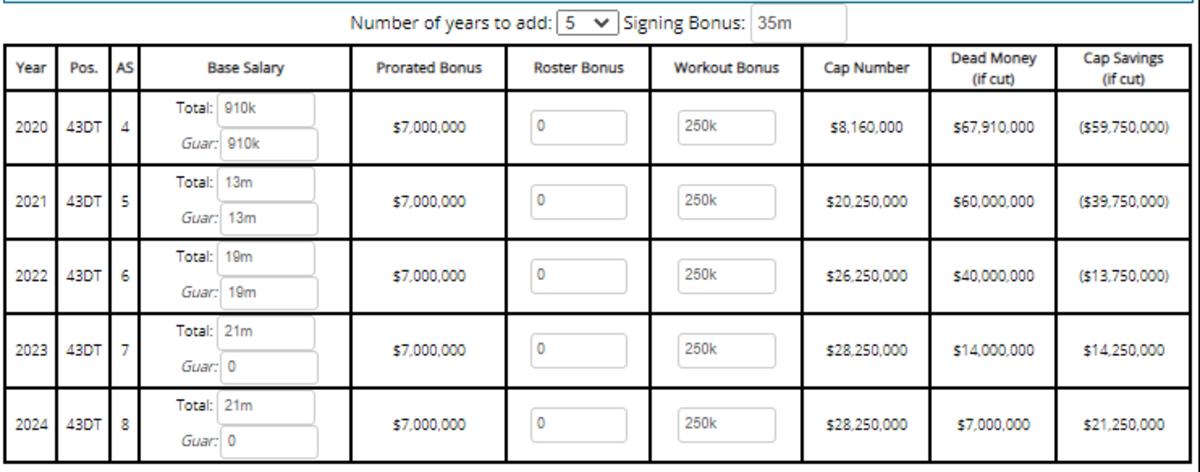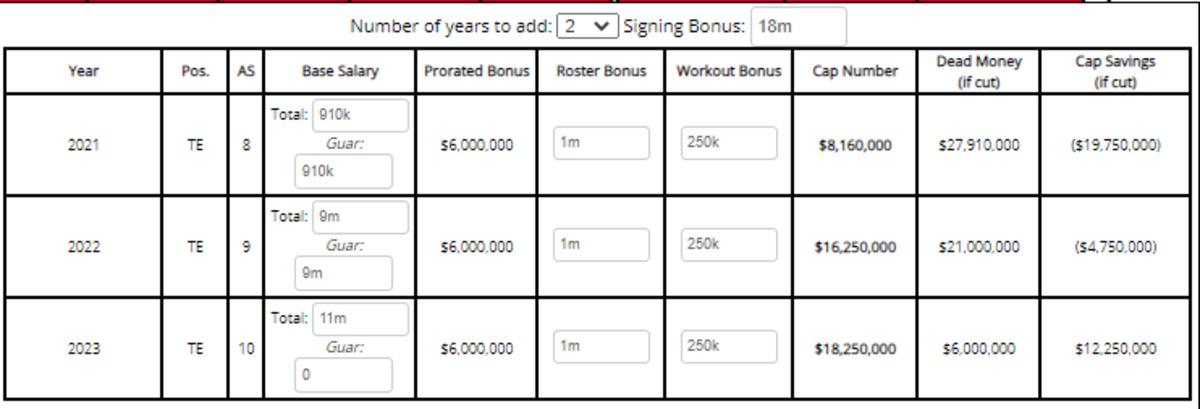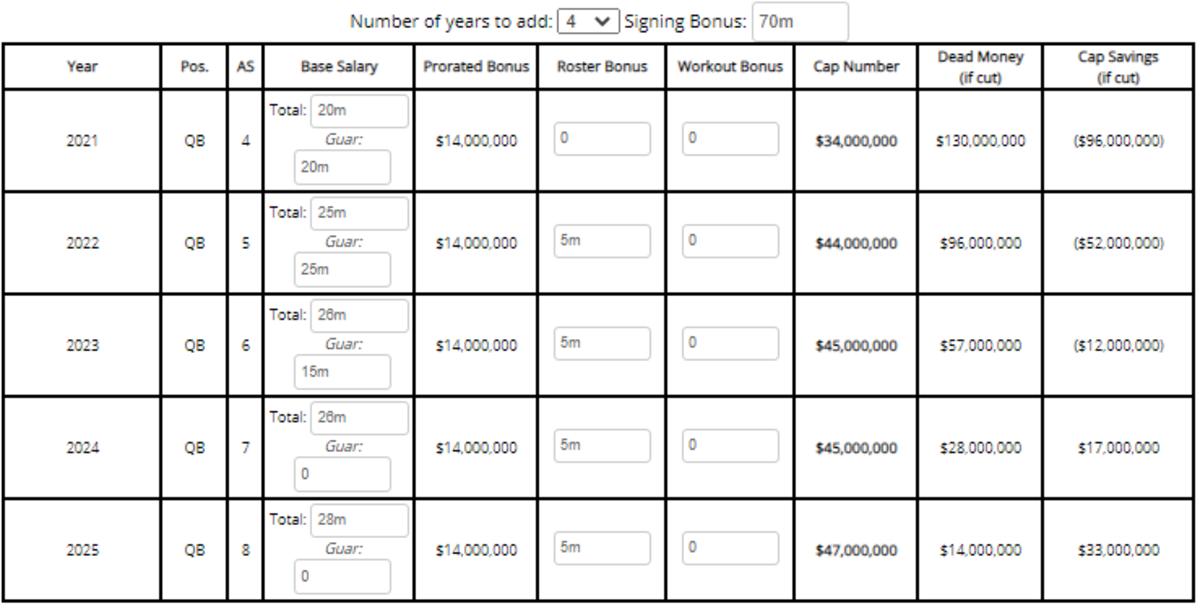The Art of NFL Contracts Part 5: How It All Fits Together
This is Part 5 of a multi-part series here on Arrowhead Report. To read earlier parts of The Art of NFL Contracts, click here for Part 1, click here for Part 2, click here for Part 3 and click here for Part 4.
Over the last four weeks, this series has gone over the ins and outs of NFL contracts, cap space, and how teams operate in those structures to succeed. The last piece of the puzzle in regards to these topics will be a full example to show how these concepts relate to a full offseason for an NFL team, specifically the Kansas City Chiefs.
Due to the 2020 offseason being over, in this article I’ll examine the Chiefs 2021 offseason. I’ll assume the players perform at the same level in this upcoming year as they did in 2020 — Chris Jones will still be a Top-3 interior defensive lineman.
The goals for this offseason will be:
1. Re-sign Chris Jones.
2. Shed bloated contracts.
3. Extend Mahomes and Kelce.
4. Splash in FA on defense.
5. Keep role players.
The Chiefs start this simulation with $39.8 million in cap space in 2021. The projected 2021 cap space projection doesn’t take into account COVID-19 because it’s impossible to tell how that actually affects the NFL at this date. There will be an update on how much cap space the Chiefs have in 2021 and 2022 after each section to highlight how the decisions made impact the cap.
Cuts
1. Cutting Eric Fisher saves $11.5 million in cap space. Fisher has been a solid left tackle for the Chiefs, but there seems to be a plan emerging with his successor. Third-round selection Lucas Niang was a quality tackle prospect going into the 2020 draft but injuries derailed his season and draft stock. The Chiefs have the luxury to let Niang sit and heal, however, so this might spell the end of Fisher’s career in Kansas City.
2. Cutting Anthony Hitchens with a post-June 1 cut saves $6.5 million in cap space. Using a post-June 1 cut — teams get one cut post-June 1 to use before June 1 — the Chiefs can spread out Hitchens’ guaranteed money so the Chiefs can save a good amount to cut him. Hitchens has never been worth his contract and finally shedding his bloated deal and getting a good amount of money back is a quality move.
3. Cutting Alex Okafor saves $5.95 million in cap space. Okafor has had a fine stint with the Chiefs but injuries did take their toll on him. This move saves a lot of money with little on-the-field cost.
Chiefs current cap space: $63.83 million in 2021/$147.57 million in 2022
Extend
DL Chris Jones, five years/$111 million

It always feels difficult to hand out two $100 million contracts to two players in one positional unit. Despite that, Chris Jones is worth it. Jones got a slight bump in total money and in guaranteed money over Frank Clark’s deal, due to it being now two years after Clark signed his deal.
TE Travis Kelce, two years/$39 million extension

While Kelce’s year-one cap hit stays the same, Kelce not only gets a lot more money, he also gets a lot more guaranteed money. By converting Kelce’s $7.75 million base salary into part of the signing bonus, that money can spread out over the contract and keep the extension’s year-one cap hit low. Kelce gets market-resetting tight end money in years two and three to keep him happy in Kansas City for two more seasons.
QB Patrick Mahomes, five years/$215 million contract

Mahomes' extension is finally in, and it’s a lot of money. Mahomes gets the highest signing bonus for a quarterback at $70 million (Russell Wilson had the highest before at $65 million) and the largest amount of guaranteed money at $150 million (Jared Goff had the highest before at $110 million). Mahomes' 2021 contract (before the extension) is the fifth-year option year that landed at around $25 million. Due to Mahomes already having a large cap hit before the extension, his new cap hit in 2021 is only $9 million more after the deal.
Chiefs current cap space: $42.33 million in 2021/$67.25 million in 2022
Re-sign
1. CB Charvarius Ward - Restricted Free Agent tender, one year/$4.85 million
2. OL Andrew Wylie - two years/$6.5 million
There aren’t many players for the Chiefs to re-sign in the 2021 offseason. After working out a deal with Chris Jones, the highest-profile free agent is Charvarius Ward. Ward isn’t a true free agent though, he is a restricted free agent which was covered in part three of this series. The Chiefs will probably be forced to use a first-round tender on Ward so they will pay him almost $5 million in 2021. If Wylie continues to grow as a solid guard, he could be a good guy to keep on the cheap to fill out the interior line.
Chiefs current cap space: $34.98 million in 2021/$63.75 million in 2022
Free Agency
1. DE Solomon Thomas, two years/$13 million
Thomas has been a disappointment for the 49ers, but he seems like a Spags type of player. Big frame, can drive, and has flexibility along the line. With Tanoh Kpassgnon and Alex Okafor leaving in 2021, the Chiefs need a defensive end or two, and Thomas can be a solid starter.
2. LB Denzel Perryman, three years/$25 million
Perryman has been a solid player for the Los Angeles Chargers for a few years now and, due to no fault of his own, he might be on the way out. The Chargers have a heap of players to re-sign in the next few years and some will be hitting free agency. With the departure of Hitchens, Perryman would be a nice linebacker to add next to Willie Gay Jr., who obviously won Defensive Rookie of the Year in 2020. (We can dream.)
Chiefs current cap space: $23.98 million in 2021/$47.25 million in 2022
The rest of the offseason
There is more to do in the offseason for the Chiefs than the stuff outlined above.
The Chiefs will probably re-sign more players and sign more free agents to fill out depth. Players like Taco Charlton, Mike Pennel, Byron Pringle and Ryan Hunter could be re-signed for cheap and help out depth on the team. We can assume these types of signings would cost around $3 million.
The Chiefs will also have to pay their rookie class of 2021. The Chiefs currently have their full complement of draft picks in addition to two compensatory picks from Kendall Fuller and Emmanuel Ogbah leaving the team this offseason. Due to this collection of picks — nine in total — the cost of the Chiefs' rookies in 2021 will be around $8.5 million and as second-year players, they will cost around $13 million in 2022.
With these last two estimates, the Chiefs will finish the 2021 offseason with $12.48 million in 2021 cap space and $34.25 million in 2022 cap space.
These cap space numbers include a Patrick Mahomes contract, a Chris Jones contract, a Travis Kelce extension, depth signings, splash free-agent signings, and a large rookie class.
This is the power of understanding contracts and systems in the NFL, it shows fans of the sport ways that teams can defy popular sports opinions on the team's finances and cap space. It is hard to imagine how the Chiefs would be able to fit massive contracts under the cap at once, but in applying concepts like restructuring, rebalancing, and re-signing cap space can be made without being a detriment to the team. Armed with this knowledge, NFL general managers are able to mold and shape their team's future with fine detail and care, something which Brett Veach has shown over his time as Chiefs general manager.
Thank you for reading The Art of NFL Contracts. Hopefully in learning about NFL contracts you, the reader, are armed with a better understanding of how the NFL works on a financial level. The Chiefs will be employing this knowledge soon with massive contracts on the horizon, so it’s a good time to put this information to use.
